A Commentary on Scotland's Digital Performance
A commentary on how Scotland is performing across aspects of the digital strategy using currently available data.
Digital Connectivity
"We will have a world class digital infrastructure that enables our people to connect anytime, anywhere using any device"
Scotland's Digital Connectivity performance has been measured using the following sources:
- Ofcom
- European Commission Digital Agenda Scoreboard
The Scottish Government's data source on digital connectivity is Ofcom, which is the
most appropriate source currently available. However, consideration is being given to whether alternative sources can be utilised
Fixed broadband
In 2012, NGA33 broadband was available to 47.6 per cent of all households in Scotland (Figure 19). The availability rate for urban households was 72.3 per cent compared with 48.3 per cent of semi-urban households and 6.3 per cent of rural households.
NGA broadband was available to a lower proportion of households in Scotland (47.6 per cent) than the UK as a whole (67.9 per cent). In the UK, 86 per cent of households in urban areas had NGA availability compared with 67 per cent in semi-urban areas and 21.2 per cent in rural areas.
Figure 19: NGA broadband availability in Scotland and the UK (per cent of households)
Source: Ofcom - The Availability of Communications Services in the UK 201334
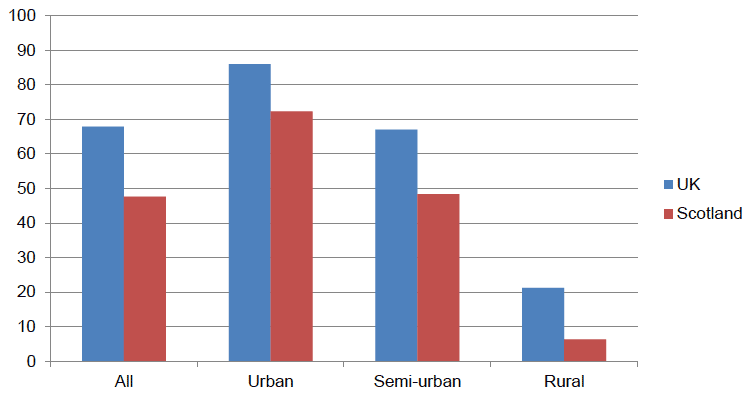
Whilst there are differences in the time period considered and data sources used, comparing the UK and the EU-27, the UK was ranked 10th with 70.3 per cent of households with NGA broadband coverage in 2012. This was above the EU average of 53.8 per cent of households.
Figure 20: Total NGA broadband coverage in the European Union, 2012 (per cent of households)
Source: European Commission Digital Agenda Scoreboard35
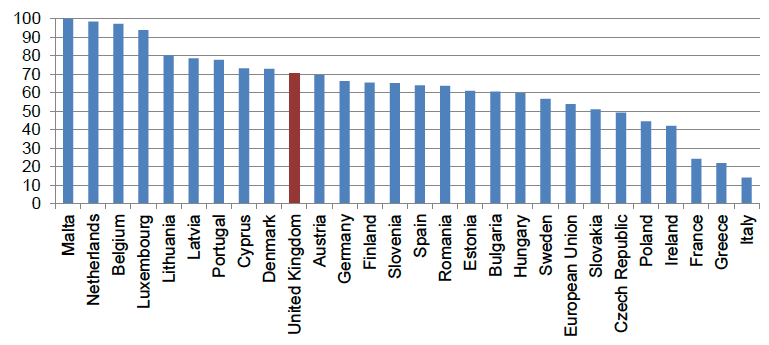
Due to differences in data sources available for NGA coverage in Scotland and the European Union, no strict comparisons can be made. However, for illustrative purposes, Scottish figures from Ofcom's "The Availability of Communications Services in the UK 2013" report have been added to the European data to illustrate how Scotland might rank in a European context. In addition, Figure 21 also illustrates Scotland's potential European ranking following achievement of total NGA coverage of 85 per cent by 2015/16 and 95 per cent by 2017/18 are achieved, as stated in Scotland's Digital Future - An Infrastructure Action plan.
Figure 21 below shows that with NGA coverage of 47.6 per cent of households in 2012 Scotland ranked 23rd when compared with the European Union, below the EU average of 53.8 per cent. However, assuming no change in NGA coverage in other European nations, the roll-out of NGA coverage under "Step Change 2015", Scotland's ranking could improve significantly to 6th in 2015/16 and 4th in 2017/18.
Figure 21: Total NGA broadband coverage in the European Union, 2012 (per cent of households)
Source: Ofcom - The Availability of Communications Services in the UK 2013 and European Commission Digital Agenda Scoreboard
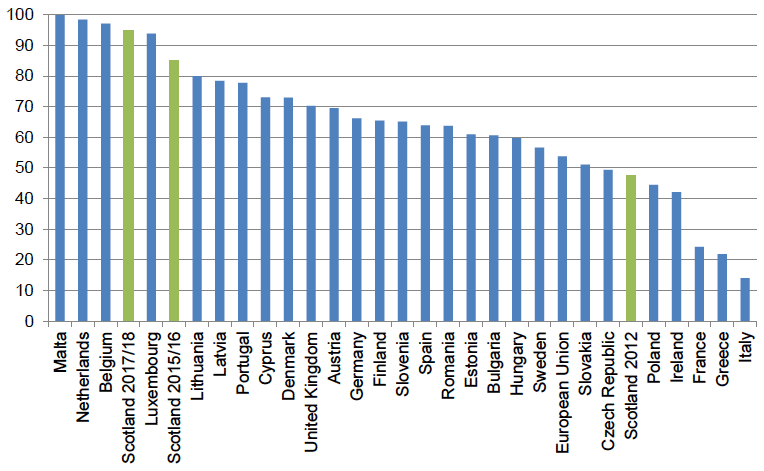
Figure 22 shows fixed broadband lines according to speed in EU-27 countries in 2013. Fixed broadband speeds above 100 Mbps corresponds to what the European Commission defines as ultrafast broadband. The EU goal is for at least 50 per cent of European households to subscribe to internet connections above 100 Mbps by 2020.
- The UK ranked 10th amongst countries with fixed broadband lines with a speed of between 30 Mbps and above and below 100 Mbps (14.5 per cent of broadband lines).
- Belgium had the greatest proportion of fixed broadband lines speeds above 30 Mbps (58.4 per cent).
- 0.9 per cent of fixed broadband lines in the UK were of speeds above 100 Mbps.
Figure 22: Fixed broadband lines by speed, EU-27 2013
Source: European Commission Digital Agenda Scoreboard36
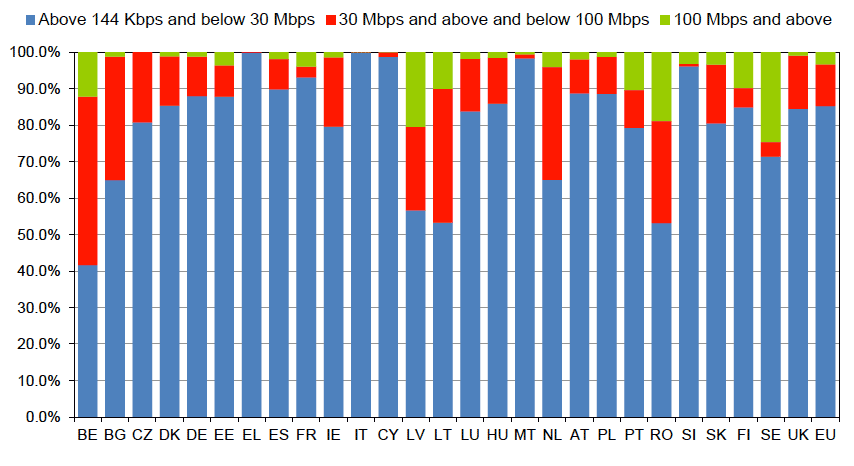
Mobile coverage
In 2012, 72.5 and 49.2 per cent of the Scottish landmass had 2G and 3G coverage respectively, compared with 87.2 and 75.8 per cent respectively in the UK (Figure 23) with slight differences in coverage between urban and rural areas.
- 97 per cent of premises in Scotland had 3G coverage provided by at least one operator in 2012 compared with 99.1 per cent in the UK.
- 98.9 per cent of premises Scottish urban areas 99.7 per cent in UK urban areas had 3G coverage provided by at least one operator compared with 91.7 per cent and 96.6 per cent of rural areas in Scotland and the UK respectively.
Figure 23: Mobile coverage in Scotland and the UK (percentage of landmass)
Source: Ofcom - The Availability of Communications Services in the UK 201337
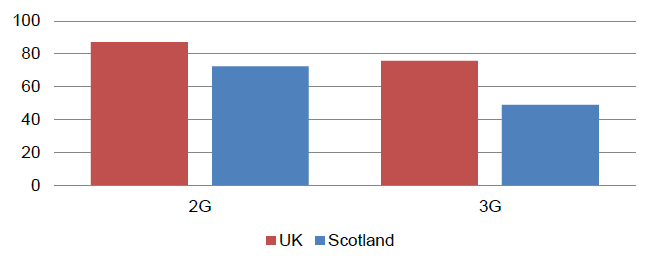
Contact
Email: Digital Scotland
There is a problem
Thanks for your feedback